In the fall of 2013, we had our first honey harvest! Here in Minnesota the bees need about 100lbs of excess honey for themselves to get a colony through the winter, and since we don’t feed them sugar syrup or take their own stores away, we don’t get a whole lot of excess. Our bees had a pretty productive year, however, and we were able to bring some home and experience the process of collecting and bottling the honey by hand.
This is what our most productive hive looked like in the fall, just before harvest time. The whole thing weighs in at about 300lbs. The bottom three deep boxes are where the main colony of the bees live, nest, raise brood, and store honey to make it through the long winter. The shallow top boxes, called ‘supers’, hold excess honey the bees have gathered that we can take.
A full frame of capped, ripe honey ready to be extracted! When bees collect nectar from flowers, it is very watery. They mix it with their own enzymes and store it in cells where they fan it to remove moisture and get it down to a dehydrated state where it can be stored long term without fermenting. ‘Ripe’ honey can be stored indefinitely, it has too high of a sugar and too low of a moisture content for anything to grow in it. The bees can tell when the honey is ripened and they cap it with wax at that point. We test it ourselves with a refractometer to be sure it is safe to store, but the bees do an amazing job on their own. Uncapped (unripened) honey can be left with the bees or extracted and used immediately, but can’t be stored for any length of time.
Raw, unfiltered honey with bits of wax cappings still in it. It’s beautiful and smells absolutely incredible (strongly sweet and floral). When processing the honey, our entire house smelled amazing.
The extractor is a simple device which spins the frames via a hand crank. The honey flies out of the cells by a centrifugal force which keeps the comb intact so the bees can reuse it again the following year.
The final product! You can actually see the lines in this bottle where the honey has poured in thick layers from the bucket. Since we don’t heat our honey it moves really slowly and is pretty hypnotic to watch flow!
If you’re interested, when we have honey available for sale, it can be found here: https://ofbees.com/honey/

 October 1st, 2013
October 1st, 2013  Foxfeather Ženková
Foxfeather Ženková 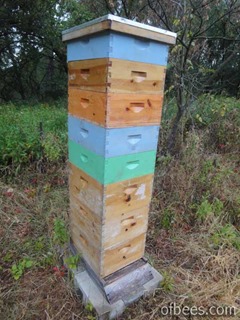
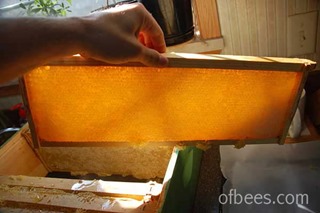
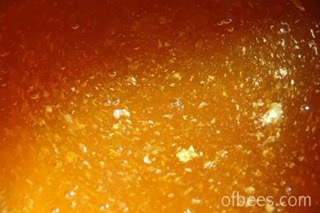
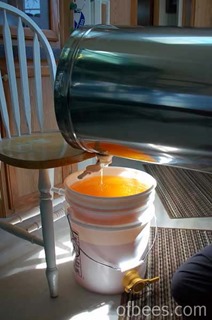
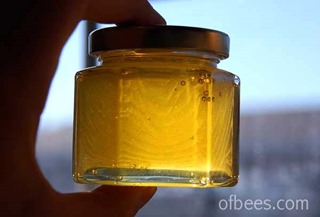
 Posted in
Posted in 
